Trip 5: Dolphins in the Dark
August really brought the rain to Stenella and The Bahamas. The first half of the trip was spent dodging squalls and storms that seemed to follow us everywhere we went. Little did we know, avoiding the storms would lead us into a remarkable encounter. One morning while hugging one of the islands to shelter from weather, we sighted a mixed group of spotted dolphins and bottlenose dolphins. Once we were in the water, we could see a spotted dolphin mother and calf pair swimming with a group of 5-10 bottlenose dolphins. They seemed to be traveling together, and the bottlenose dolphins displayed a lot of courtship behavior amongst themselves.
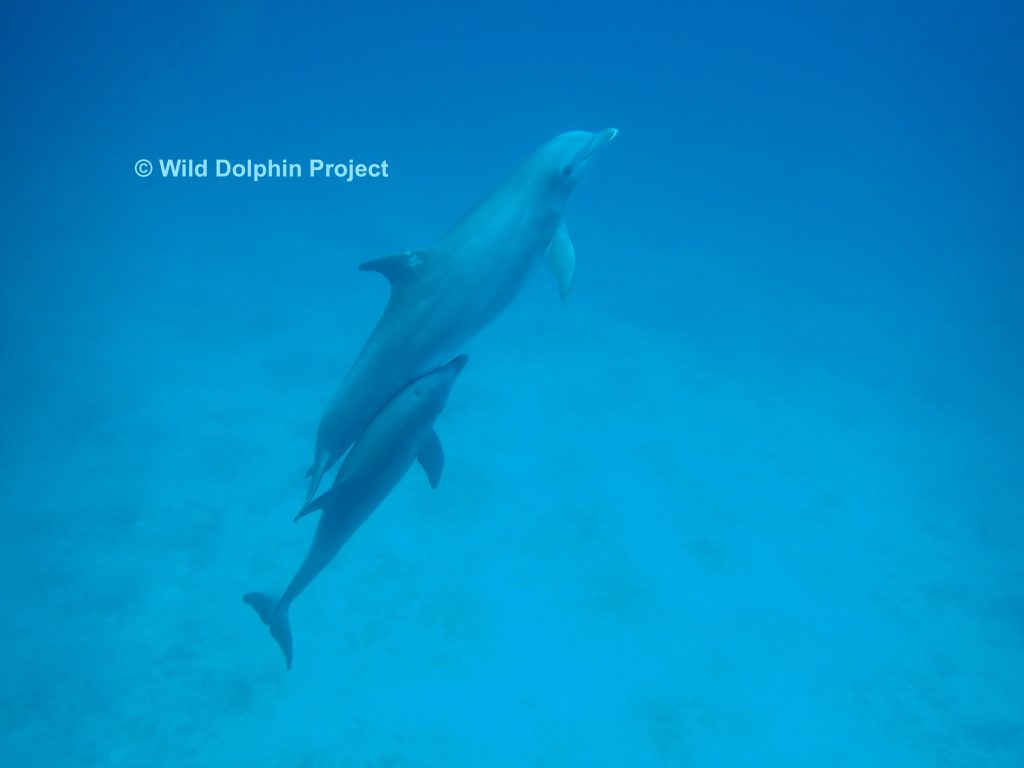
Bottlenose mom and calf. Photo by Alexandra Rose.
Once we were out of the water, we realized through photo identification that the spotted dolphin mom was none other than Naia! This particular individual has an extensive sighting history with us dating back to 1995. Then, she was a young two toned dolphin and member of the southern group in Little Bahama Bank. Over the last 30 years, we have seen her with 4 calves. Naia is a great example of why long-term research projects like the Wild Dolphin Project are so important – documenting her reproductive history can tell us a lot about Atlantic spotted dolphin biology.
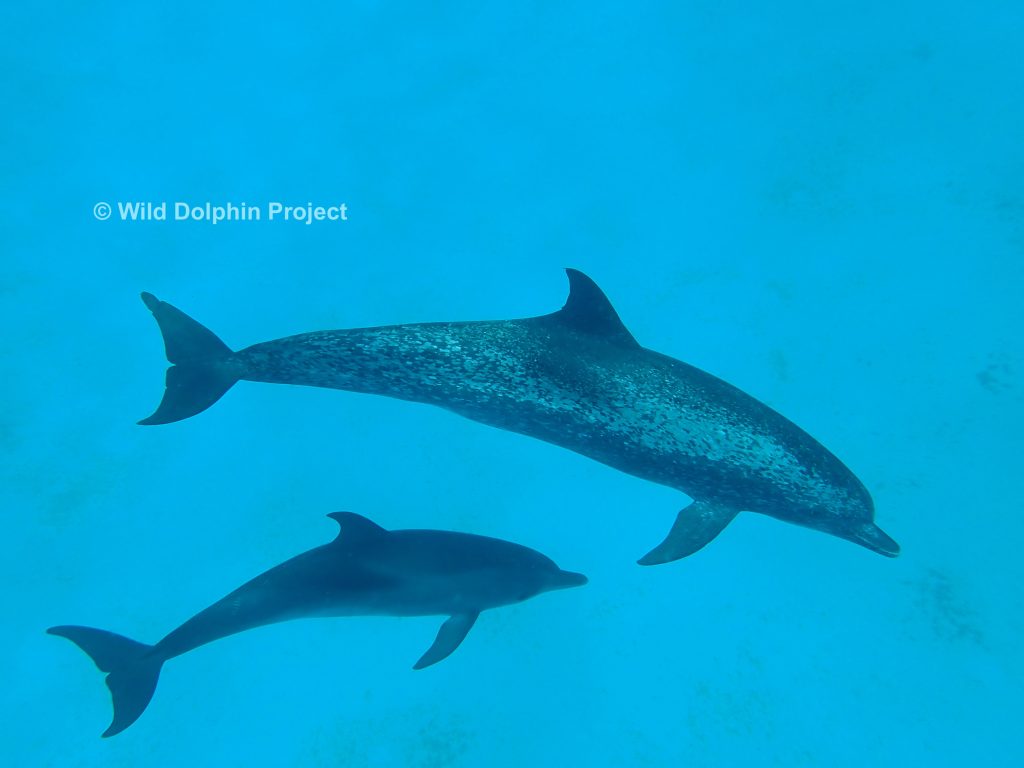
Naia and calf, Nera. Photo by Alexandra Rose.
We were fortunate to have another amazing experience just a few days later in Bimini: the first successful night drift of the season. One evening just before sunset, a group of speckled and mottled male Atlantic spotted dolphins approached our bow. With the sun going down, we knew we had a great opportunity to study their feeding behaviors by going offshore for a night drift. Hours later, as we drifted in the dark with a hydrophone in the water, we heard the unmistakable sound of dolphin buzzes and clicks. We sighted a school of squid near our boat that was now being feasted on by 3 Atlantic spotted dolphins. Our research team quietly slipped in the water to observe and record the foraging behavior. The black waters quickly concealed the dolphins as they darted in and out of the school, but did nothing to quiet the cacophony of buzzes and clicks used to echolocate in the deep.
Read more about echolocation in our blog The Spooky Science of Dolphins, Bats, and Echolocation. After over an hour of observation, the dolphins moved on and we returned to our anchorage. The elated feeling lasted for the rest of the trip and will be an unforgettable memory for all our passengers and crew.
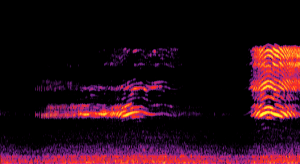
Spectrogram from night drift.
September
Trip 6: Bye Bye Bimini
Just like that, we have reached the end of our season. Hurricane Erin may have delayed our final trip, but it was still filled with lots of dolphins, data, and memories. Our largest encounter on this trip included 22 Atlantic spotted dolphins, ranging from two-toneds to fuseds. This was a very active group and we observed tussling, chasing, and open mouth displays. To learn more about what this means read our blog Life in a Dolphin Pod: Male Social Structure. Our final bottlenose dolphin encounter included 12 individuals. This group was also active: spyhopping, bowriding, and leaping out of the water. Some dolphins lingered with curiosity while others scanned the seafloor in search of food. As the inquisitive few began to fall behind, one dolphin slapped its tail at the surface before they all swam off, as if signaling to the stragglers to rejoin the group. Another great sighting for the books (…and data binders).
Final Trip Highlights – A Memorable End to the Season
Our final trip of the season brought a mix of rough weather and unforgettable encounters.
We were lucky to witness a group of seven male dolphins courting a female, along with another fascinating moment of juvenile play and aggression — always a glimpse into the complex social world of dolphins. We even had an extended encounter with foraging bottlenose dolphins, who are typically more elusive.
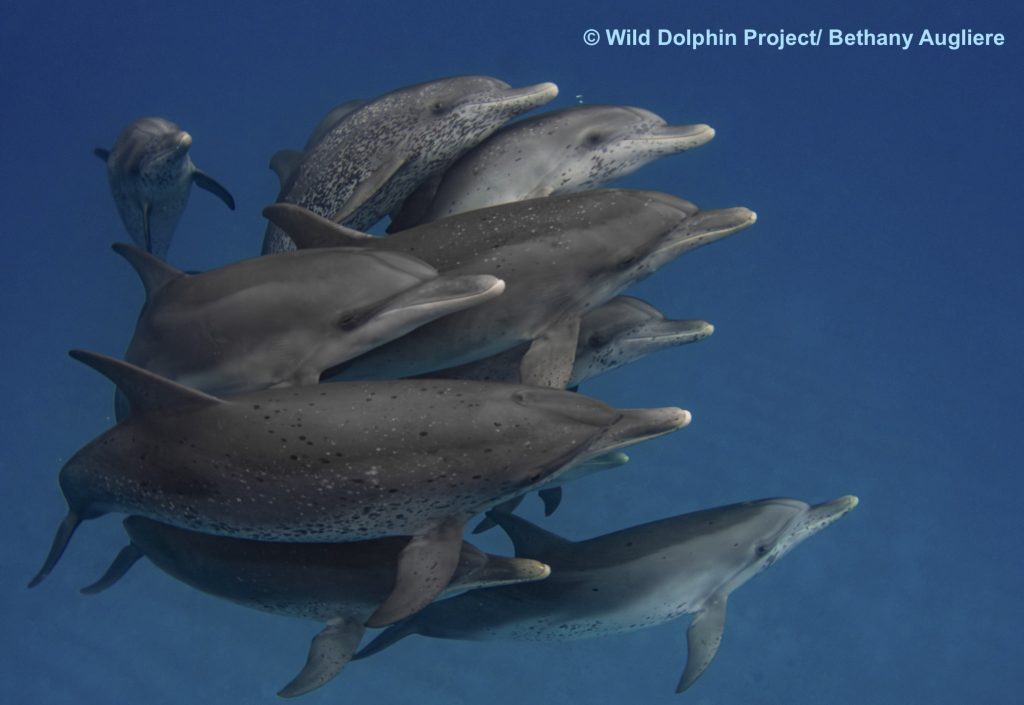
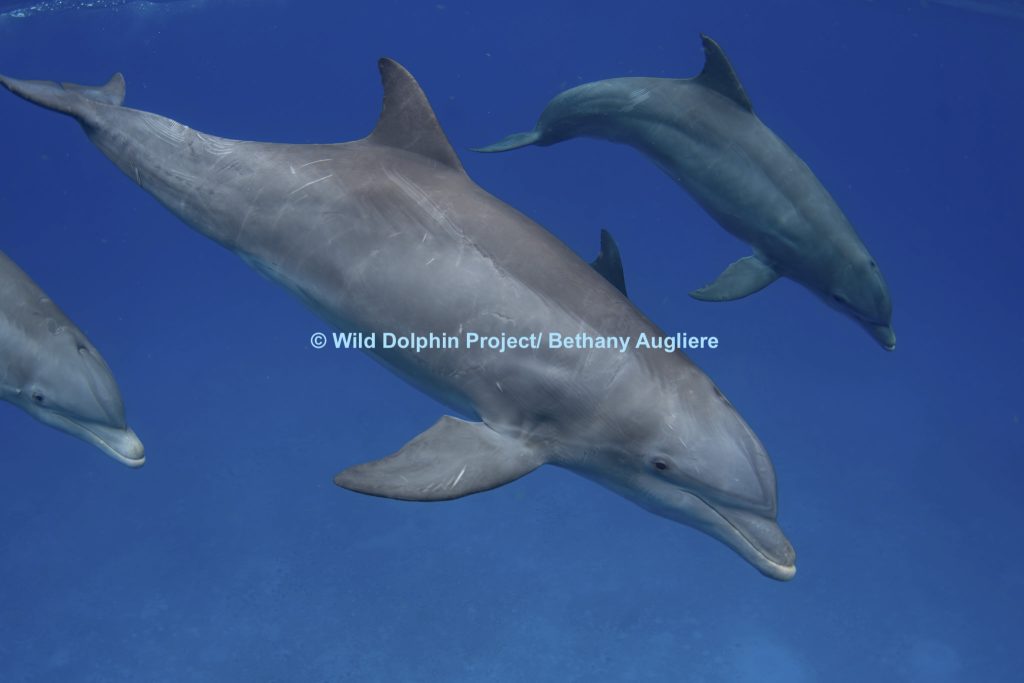
We also celebrated two special birthdays on board — our Founder and Director, Dr. Denise Herzing, and our Research Assistant, Alexandra.
From spectacular sunrises and sunsets to quality time with our brilliant colleagues and the President of our Board, this trip was the perfect send-off to a great season.
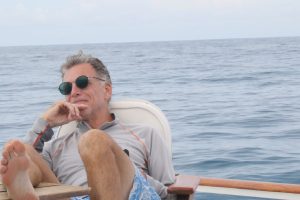
President of the Wild Dolphin Project, Drew Mayer.
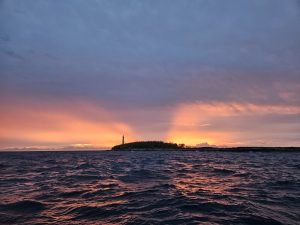
Great Issac lighthouse. Photo by Alexandra Rose.
What a way to wrap it all up!
